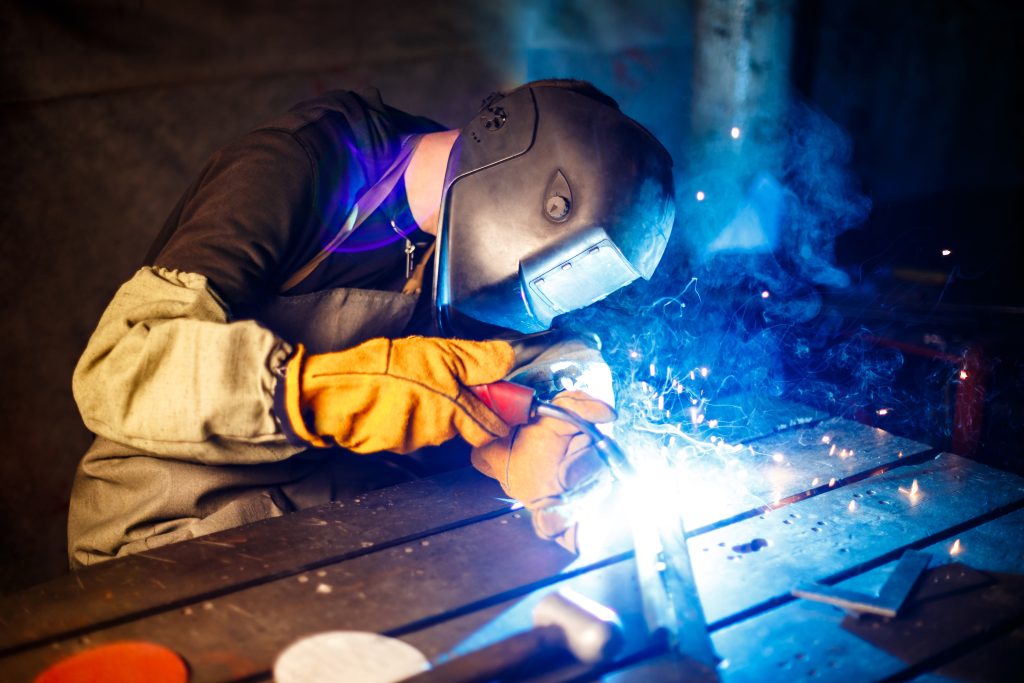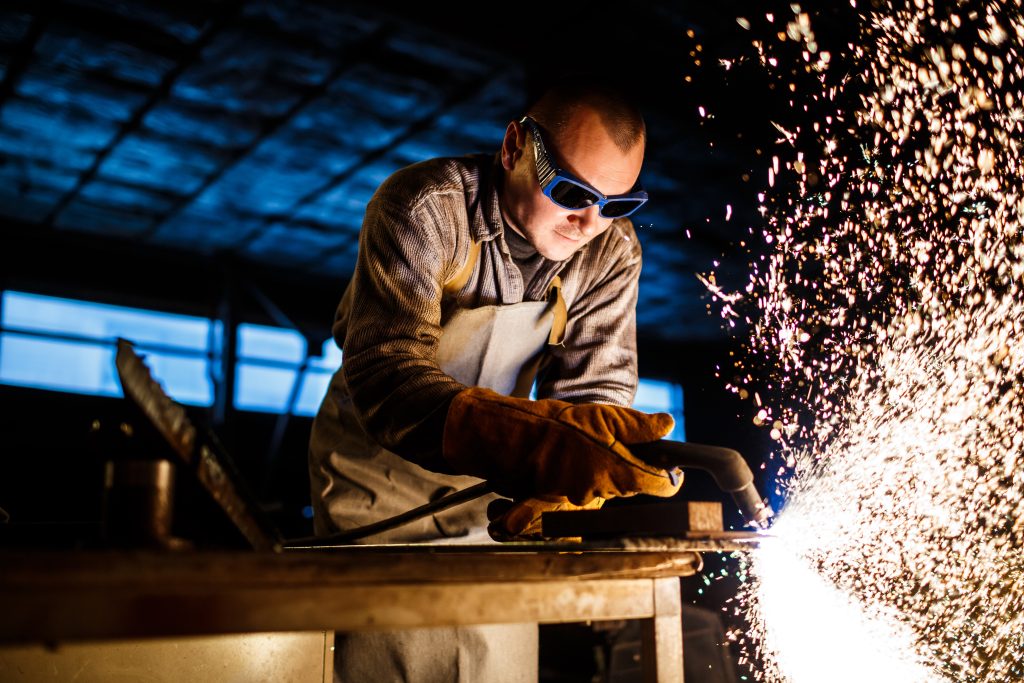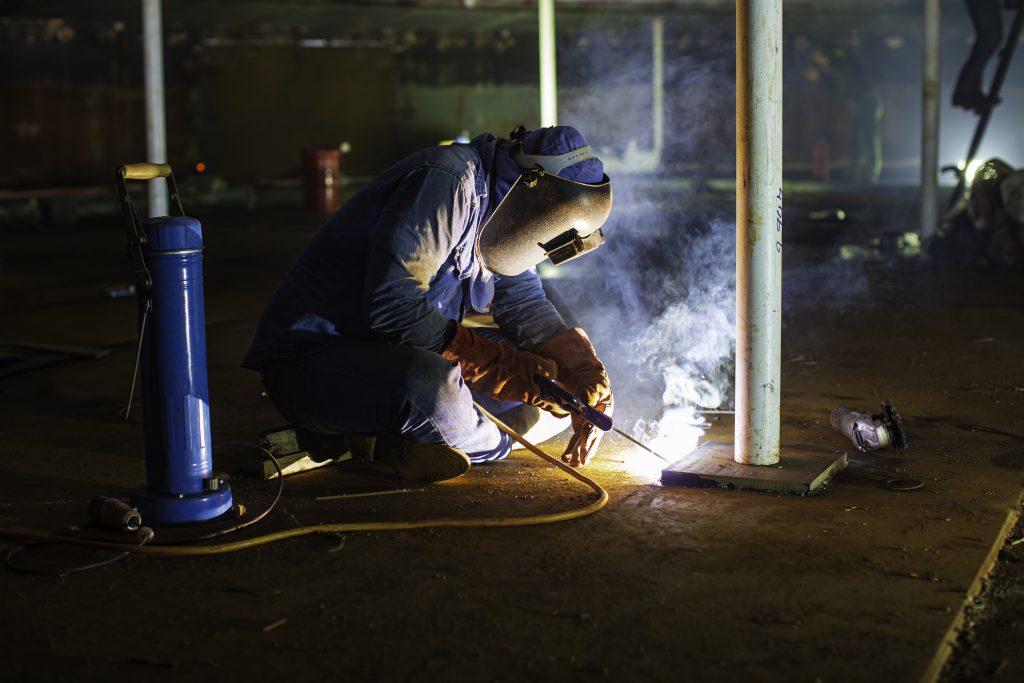


CERTIFICATION : Maiam, NSDC Certification
DURATION : 1 Month
Training in TIG,MIG,SPOT,ELECTRIC & GAS Welding
QUALIFICATION : SSLC or Plus Two
Courses
1. TIG (Tungsten Inert Gas)
The TIG welding course introduces learners to Gas Tungsten Arc Welding (GTAW) fundamentals. Participants gain proficiency in operating TIG welding equipment, selecting appropriate electrodes and shielding gases, and mastering welding techniques to join metals like stainless steel, aluminium, and titanium. The curriculum covers safety protocols, electrode preparation, joint configurations, and heat control to ensure strong, precise welds. Practical sessions emphasise hands-on application, troubleshooting welding defects, and understanding metallurgical principles affecting weld quality. This foundational course is ideal for beginners and welders seeking to expand their skills in high-quality welding for applications across various industries.
2. MIG (Metal Inert Gas)
The MIG welding course focuses on Gas Metal Arc Welding (GMAW) fundamentals, providing essential skills and knowledge for beginners. Participants learn to set up and operate MIG welding equipment, adjust welding parameters such as voltage and wire feed speed, and select appropriate shielding gases and electrodes for welding steel, aluminium, and stainless steel. The curriculum covers safety practices, joint preparation techniques, welding positions, and troubleshooting common welding defects. Hands-on training emphasises practical welding exercises to develop proficiency in creating strong and consistent welds. This introductory course prepares individuals for entry-level positions in the manufacturing, construction, and fabrication industries.
3. SPOT
The spot welding course introduces learners to the fundamentals of resistance spot welding, a process commonly used for joining sheet metal components in manufacturing. Participants learn how to set up spot welding equipment, including how to adjust welding parameters like current, time, and pressure. The curriculum covers safety precautions, electrode selection, and techniques for achieving strong welds with minimal distortion. Practical sessions focus on hands-on practice in positioning electrodes, preparing work pieces, and troubleshooting common welding issues like nugget size variation. This foundational course equips individuals with the skills needed for entry-level positions in automotive, aerospace, and electronics industries where spot welding is prevalent.
4. ELECTRIC
Electric welding encompasses various welding processes powered by electricity, such as arc welding (e.g., stick, MIG/MAG, TIG), resistance welding (e.g., spot welding), and electron beam welding. Participants in a basic electric welding course learn fundamental skills including equipment setup, electrode selection, welding techniques for different materials (e.g., steel, aluminium), and safety protocols. The curriculum typically covers the principles of electrical welding, heat management, joint preparation, and troubleshooting welding defects. Hands-on training focuses on practical application, ensuring learners develop proficiency in creating strong, durable welds suitable for diverse industrial applications in the manufacturing, construction, and repair sectors.
5. GAS Welding
Gas welding, specifically oxy-fuel welding, involves using a mixture of fuel gas (such as acetylene or propane) and oxygen to generate a flame capable of melting metals for joining. Participants in a basic gas welding course learn essential skills, including setting up and handling oxy-fuel equipment, adjusting flame characteristics, selecting appropriate filler materials, and understanding safety procedures. The curriculum covers joint preparation techniques, metallurgical principles related to heat input, and basic welding positions. Practical sessions emphasise hands-on practice in controlling the torch, managing heat, and achieving strong welds on materials like steel, copper, and aluminium, preparing individuals for applications in fabrication, repair, and artistic welding.